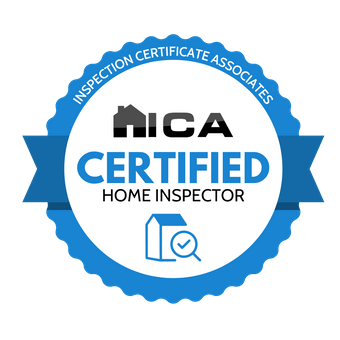Top 5 Deficiencies Exposed From a Knoxville Home Inspector
Here we will cover some of the most common deficiencies found during our Home Inspections here in the Knoxville area. Keep in mind we are only one inspection company and this is what we have found the most common. Every Home Inspector is different. Surprisingly we were able to narrow down our top 5 deficiencies and we will explain how serious they may or may not be. This is important for the agent and home owner as these are discoveries that are better caught sooner than later.5.) Exposed Shingle Nail Penetrations
When walking a shingled roof, one of our most common catches are exposed nail penetrations. The shingles of the roof are nailed in a particular nailing zone on the shingle itself. Nailing in this zone allows the shingle on top to cover those nails. This allows the water to run over top and past the penetrations to avoid leaks. Sometimes, the nails aren’t always placed in the nailing zone. Allowing them to be exposed to the elements. Other times we see repairs made to shingles done improperly. What does this mean for the home owner or agent? As a Home Inspector, we are going to write it up every time. The smallest exposure to water, especially in some of these Knoxville rains, can cause a leak. This does not necessarily mean your roof is going to fall apart and the Home Inspector deems the home unlivable! The majority of the time, it is a simple fix. This is one of those 99 cent fixes that can turn into a potential nightmare if ignored.4.) Cracks in Concrete
There is a mind blowing fact about concrete that I wish we Home Inspectors did a better job explaining to clients and agents. Believe it or not, concrete cracks. Crazy, I know but often times more time than not, concrete is going to crack. Old concrete cracks, new concrete cracks, it just cracks. The common misconception is that because there is a crack, the driveway, foundation, walkway, or any concrete surface is collapsing. Though this can be true, it often times is not the case. In respect to porches as stoops, the National Home Inspector Examination Volume 2 states ” There is no agreed upon standard for what constitutes a reportable crack in concrete stoops, porches, and steps. A common guideline is that cracks exceeding ¼ inch in width or vertical displacement should be considered for repair”. It also states ” There is no agreed upon standard for what constitutes a reportable crack in a footing. A common guideline is that cracks exceeding ¼ inch in width or ¼ inch vertical displacement should be considered for evaluation and repair. There is no agreed upon standard for what constitutes reportable rotation or bowing of a column or pier. A common guideline is that rotation exceeding ¾ inch in 8 feet should be considered for evaluation and action.” Let this be your voice of ease when your inspection report comes back with cracks in the driveway. If they are 1/8” or less, it was likely due to the curing process of the concrete itself and is likely not a structural issue. However, do your own research and have professional come out and evaluate if you are still uncomfortable.3.) Improper/ Missing Flashing
Flashing assists in keeping the water out and away from the building materials of the home. Flashing is a thin piece of metal that is used in different areas of the home to keep water away. Common places to find flashing is your roof, under the edge of your shingles, around windows and doors. Essentially, the flashing keeps the water from pooling and soaking into the building materials. If water can touch the building materials, it can cause a lot of future problems. It is important that your Home Inspector catches any improper/ missing flashing. We often see this in DIY repairs or when flashing gets damages and goes unrepaired. An informed agent or home owner can see most of the flashing when walking around the home. This is something you can do yourself whether you’re viewing a potential purchase or are a new learner and want to look around your own place.2.) Improper Grading

1.) Moisture in The Crawlspace
Improper grading is often a key indicator to moisture in the crawlspace. However, this is another that I feel we Home Inspectors should do a better job of explaining to clients and agents. The ground has moisture. The air has moisture. The building materials have moisture. East Tennessee has moisture. When we have ground, air, and building materials in one area in East Tennessee, why are we shocked that there is moisture in a crawlspace? Granted, there is a such thing as too much moisture. Puddling water is too much moisture, but I feel more times than not we inspectors do not explain it well to the client. So the client sees in their Home Inspection report that there is “moisture in the crawlspace” and loses their mind. Is there a moisture mitigation system? If not, are we surprised? We need to inform the client what that means and looks like. Not all moisture is shocking and we need to be better as Knoxville Home Inspectors and Home Inspection companies to inform our clients and agents. If you felt that you learned something from us, please like and share with a friend/ agent or Home Inspector. If your looking for a Knoxville Home Inspector, reach us at (865)-393-3910 or Schedule an Inspection here.
Facebook
Twitter
LinkedIn


.png)
